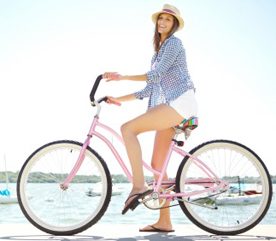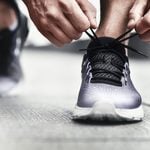How to Find the Right Bike
How can you be sure you are getting the most from your bike-new or old? We asked one of Canada’s biking pros for advice on how to find the right bicycle for you.

Elladee Brown, a British Columbia-based former Canadian national cycling team member who competed in seven mountain biking world championships, now works with top bike companies like Shimano and Marin.
The Bike
Evaluating how you plan to use your bike is the first thing you should consider, says Brown. Are you going to commute to work or bike trails for exercise? On concrete or dirt? For fitness, for races, or just for fun?
Many people are increasingly choosing to commute to work on bikes in the summer, which has led to the creation of a hybrid bike with larger wheels, which gives you greater speed and has a smoother ride on asphalt. Plus, some bike companies are selling new driveshaft technology that encases the chain and gears inside a metal casing.
These internally geared hubs are popular for commuters because they keep dirt and grit out of the gears for easy maintenance, eliminate the chances of getting chain grease on nice pants, and even allow you to shift gears while stopped.
Brown recommends getting whatever type of bike you have fitted to your body. “Whether it means sliding the seat forward or moving the handle bars up higher, there are all kinds of adjustments now on modern bikes that allow you to tailor that bike perfectly to your body. And over time, that becomes such an important factor, because you can wear out your shoulders or hurt your hips. And it might sound complicated, but often it’s just a few twists of a screw to get you to the right position.”
Maintenance
Once your bike fits you like a glove, it’s important to keep that glove in good condition.
“You owe it to not only to yourself and your bike but to the other people you’re biking with to regularly maintain your bike,” said Brown. “A bike is like a car. It needs to be serviced and have its drive chain and tires checked.”
Accessories
Before setting out on your properly fitted bicycle, there are several accessories you should consider. Of course, most important is a helmet. Most of Canada requires a helmet for all children, but even if they don’t require it for adults, it’s the smartest piece of equipment you can get for your bike.
A good lock is also a must-buy. Your bike lock need not be Fort Knox, but as a rough guide avoid the chain link locks, which can be snipped in a matter of seconds. A white light on the front and a flashing red light on the rear of your bike are also essential if you plan to ride in low light or at night.
For commuters, another great piece of equipment is a fender, front and rear, that will deflect mud and water away from you. Panniers or saddlebags are another great accessory as they allow you to carry a briefcase, groceries or even a change of clothes.
For the Kids
We all remember having the training wheels taken off and a parent running along behind our wobbly two-wheeler. New bike designs might just do away with that childhood right of passage and all its associated scrapes and cuts.
Run bikes are small bikes, designed for kids, that have no pedals. They are low to the ground so children can push the bike along with their feet, pulling their feet up whenever they want to coast. This helps them develop balance easier, so they are better prepared for the transition to the two-wheeler.
For kids not ready to move on their own, there are a wide variety of trailers and some of the best are made by Chariot in Calgary, Alta. Many of Chariot’s bicycle trailers can also be used as jogging strollers or even have skis attached. The durable frames are made out of aluminum, so most of the weight you carry is your kid’s.



